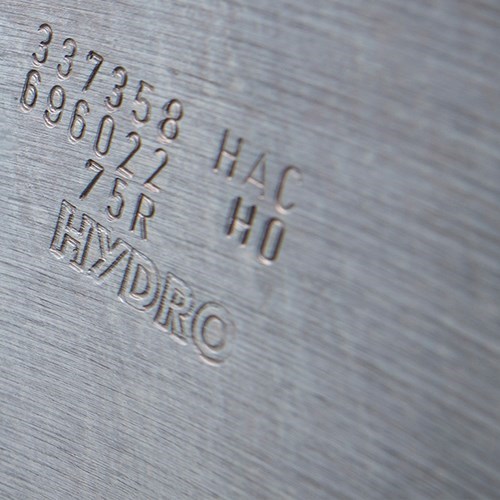
To view the content, please enable marketing cookies by clicking on the button below.
Cookie settings

The use phase is an important part of the lifecycle of a building¹. The most efficient way to reduce operational emissions is to offer performance products to optimize the energy consumption once the building is used. The less energy that is consumed, the less energy is produced, the less emissions are generated. We develop high performance products which meet high requirements for thermal insulation, low maintenance, energy performance, comfort and acoustics. The rest of the CO2 emissions are generated upfront, with the use phase accounting for 1/3 of the total CO2 emissions. Read how we can reduce these in the chapter beyond products.
Aluminium's properties of flexibility, lightness and strength make it the ideal material for almost any design challenge. It also possesses other highly sought-after qualities : Healthy: It does not emit dust, vapour or particles, and contact with this material does not pose any toxicity problems. Non-flammable: When it reaches its melting point in the event of fire (around 650°C), it does not give off any flammable gases or vapours. Easy to maintain: Due to its durability and resistance to surface treatments, regular cleaning with a neutral detergent followed by rinsing with water is sufficient.
Aluminium has characteristics that make it an environmentally friendly metal: abundant, indefinitely recyclable and therefore durable. Its quality and material properties are never lost. In addition, aluminum remelting uses only 5% of the energy required to produce primary aluminium.
|
CERTIFIED MATERIALS SAPA profiles are extruded using low CO2 footprint aluminium. This is achieved by using renewable energy and by recycling aluminium from post-consumer scrap metal. This entire recycling process is certified by DNV-GL, Det Norske Veritas, an independent certification company heaquartered in Oslo, Norway and with 350 offices in over 100 countries around the world. The Hydro Group, to which SAPA belongs, has been the first company to be recognised by the Aluminium Stewardship Initiative (ASI), the internationally recognised standard for the evaluation of sustainability throughout the entire life cycle of aluminium, convering from when the metal was obtained, its production and use and up to recycling when the product has reached the end of its lifecycle. |
CERTIFIED PRODUCTS From the design, selection of materials and the way its produced, products must offer the benefits that the market needs while respecting the environment as much as possible. We classify our product range under the criteria of the Cradle to Cradle seal, and independent institute that certifies products and processes from a circularity perspective. We have several certified Cradle to Cradle seties, including the production at our plant in Miranda de Ebro in Spain. This way we can ensure that the carbon footprint is as low as possible when transporting our goods. |
CERTIFIED BUILDINGS LEED, BREEAM, WELL, and VERDE are some of the most recognised organisations for evaluating the sustainability and environmental impact of buildings. Among the most relevant requirements to obtain green building certifications are the credits provided by the materials chosen to be used. In additon to providing products that have a lower environmental impact, we can provide the certifications needed that contribute to the achievement of the various green building rating schemes available to you. These certifications include ISO certifications on quality and environemental management, official test certifications, Cradle to Cradle certifiations and more. |
We believe that to be truly sustainable, we must look to a world beyond four walls and work to make it a reality – starting today. That´s why we go beyond simply world-class low-carbon materials, to run every part of our business as sustainably as possible. SAPA has a holistic approach to sustainability and act within 3 main areas:
¹WGBC (2019). Op. cit.